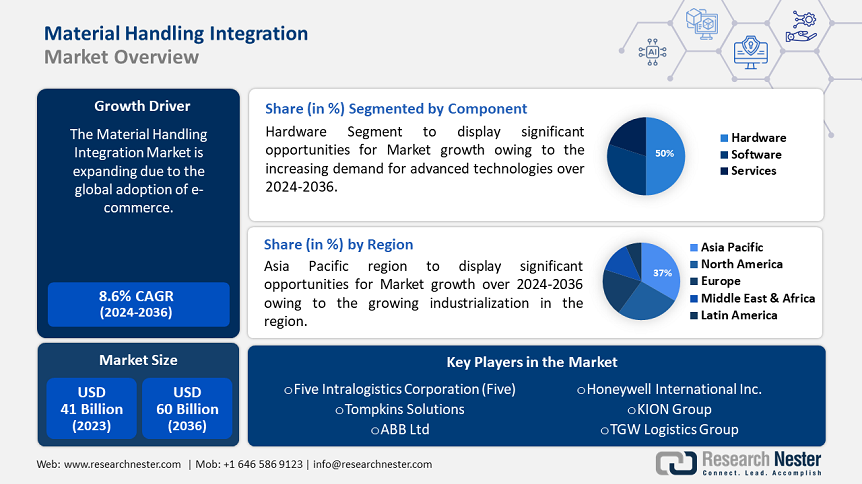
Material Handling Integration Market size was over USD 48.25 billion in 2024 and is projected to reach USD 142.72 billion by 2037, growing at around 8.7% CAGR during the forecast period i.e., between 2025-2037. In the year 2025, the industry size of material handling integration is assessed at USD 51.61 billion. A significant catalyst for adopting material handling integration systems is the growing global adoption of e-commerce. For instance, in 2022, global retail e-commerce sales exceeded USD 5.7 trillion. In 2026, this sum is expected to rise by 43%. Demand for effective material handling systems is rising with millions of products imported every day worldwide. These systems are widely used by industry leaders to improve operational efficiency in an intensely competitive market for electronic commerce. Furthermore, by optimizing the flow of materials, minimizing delays, and reducing errors contribute to improved operating efficiency.
Moreover, integration of material handling is essential in a wide range of sectors, including manufacturing, logistics, retail, and healthcare. It improves the efficiency of production, minimizes interruptions, and enables accurate time inventory control for manufacturing. In logistics, it allows smooth movement and tracking of goods, shorten transit times and improves visibility across the supply chain. Integration of material handling enables efficient order fulfillment, mitigates out-of-stock situations, and increases customer satisfaction in the retail sector.

Author Credits: Richa Gupta
Copyright © 2024 Research Nester. All Rights Reserved

FREE Sample Copy includes market overview, growth trends, statistical charts & tables, forecast estimates, and much more.
Have questions before ordering this report?